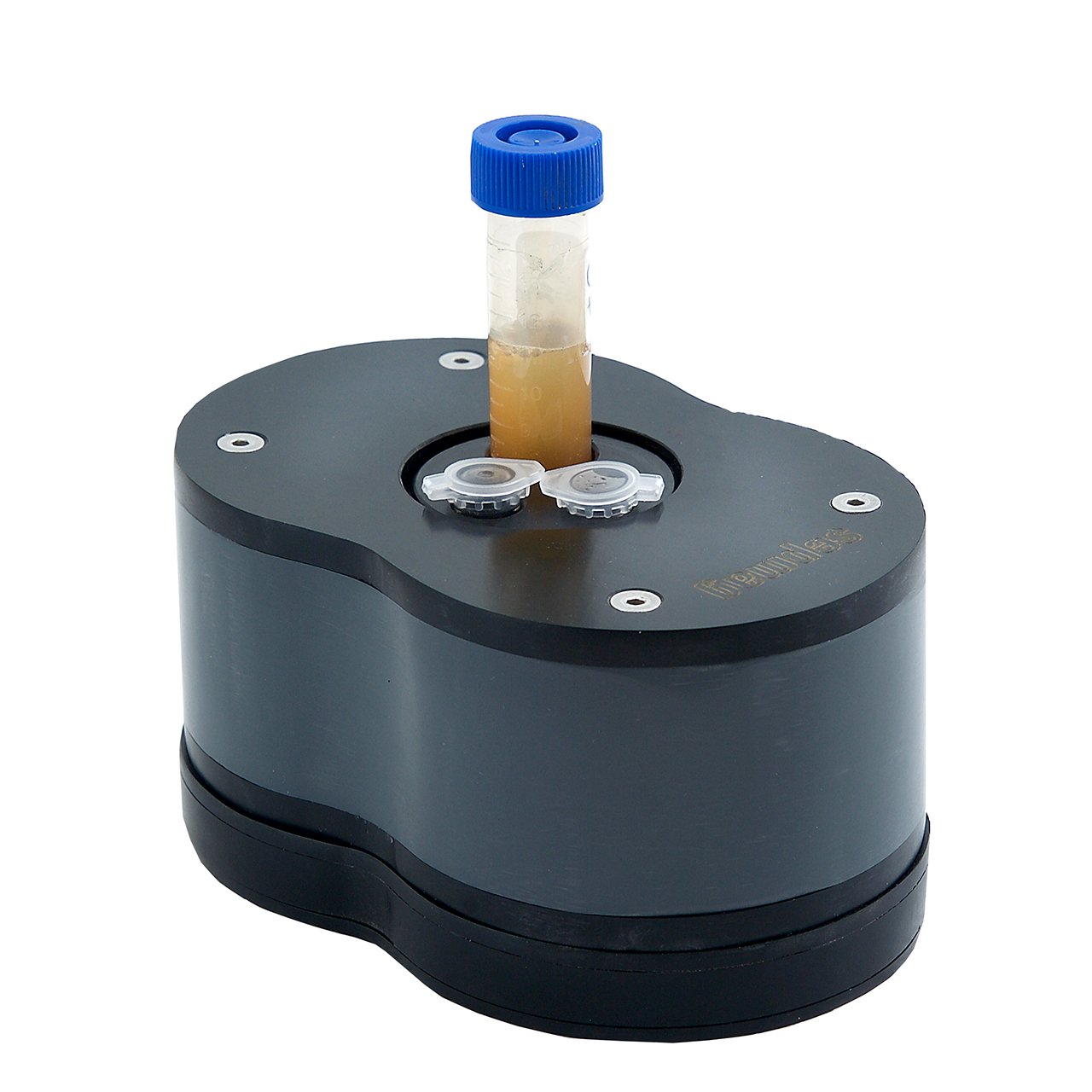Magnetic separation has been an emerging technology in the recent decades in biomedical science and industry in which magnetic property and behavior – known as “magnetism” – of micro/nano-sized particles are employed for the separation of macromolecules of interest (e.g. nucleic acids, proteins, peptides etc) from biological samples or chemical suspensions.

The usually called ‘magnetic materials’ (ferro- or ferrimagnetic) shows a large response to applied magnetic fields, allowing interaction at distance. In their standard form, all these materials have memory: remain magnetized when you remove the applied magnetic field. One way to increase the capacity of not losing the memory is to reduce the size of the particles (like in the old cassette type of computer floppy discs) to a certain diameter. However, if we decrease well below this threshold it completely loses the magnetic memory. This state, with high response to applied magnetic field but zero magnetisation when the field is removed, is called superparamagnetism and is the one considered for the design and synthesis of magnetic beads/particles and also the magnetic separation systems.
The concurrent breakthrough of biomedical science with the separation/purification methods of macromolecules and the introduction of magnetic beads/particles with improved properties (e.g. specific surface affinity ligands/chemistries) in recent decades necessitated quick, efficient evolved magnetic separation technologies to satisfy the demands and replace conventional non-magnetic filtration, centrifugation and separation techniques.
Magnetic beads/particles which are surface-coated with specific affinity ligands bind their biomolecules of interest (e.g. antigens, antibodies, catalyzers, proteins or nucleic acids). After the incubation phase, the vessel is exposed to a magnetic separation rack. The magnetic beads/particles (and attached biomolecules) are then attracted and retained by the externally applied magnetic force. After the separation phase, the supernatant (not affected by the magnetic field) can be discarded and the biomolecule (attached to the magnetic beads) easily isolated from the original media and eluted, if necessary.
Magnetic separation is the only feasible method, among all, for the recovery of small particles with the diameter 0.05–1 μm in the presence of biological debris and other material of similar size. Furthermore, the efficiency of magnetic separation is especially suited for large-scale purifications. Commercial magnetic separation racks function as a basis of various automated low- to high-throughput procedures to save time and costs, are far less rigorous, no centrifugation required, minimize cross-contamination, and operate with a variety of magnetic beads/particles in the manual and automated mode.
Magnetic beads and magnetic separation rack interaction
Before starting with a separation process, the first step is to select the most suitable separation strategy. This means thinking about the system and the process and taking into account all relevant parameters: target, beads’ adsorbents, separator design, process and conditions. The separation strategy is dependent on the target molecule and includes not only the actual magnetic separation process but also the interaction between the magnetic material and the target molecules.
There is copious research and studies in the literature regarding the magnetic beads/particles and their respective characteristics (e.g. diameter, density, magnetic pigment content, surface activation) affecting the efficiency of the process they are involved in. This vast focus on the magnetic beads/particles only has partly ignored the importance of magnetic separation racks and arisen issues such as high losses, slow separation, inconsistent results, clump formation, and so forth which has led to material, cost and time waste and with sometimes no reliable and citable results.
Hence, it is vital to consider the magnetic bead separation process as important as magnetic beads/particles. Magnetic carriers need to interact with a magnetic field in order to move. The magnetic field must generate a magnetic force which is enough to overcome the drag force generated by buffer viscosity. If the magnetic separation rack does not generate the appropriate magnetic force, which is different to the magnetic field intensity, the entire process becomes inefficient, regardless of the characteristics of the magnetic beads. Despite the importance of the subject, detailed technical literature describing how magnetic fields interact with beads is very thin on the ground.Magnetic separation racks and systems
A simple magnetic separation rack is a straightforward piece of permanent magnet. Calculating the value of a magnetic field in each point in space and then determining the gradient is not too complex. The graph shows the results as we move away from the center of the surface of the magnet. In the best case scenario (assuming the magnetic beads are always saturated) the magnetic force changes very quickly according to the distance from the surface. When different magnet sizes are compared, it may seem surprising that small magnets generate bear forces near the surface than larger ones, but this is because the larger the magnet, the more constant the magnetic field and, as we have just learned, a constant magnetic field does not generate force.
Some magnetic separation devices try to get around this by using two permanent magnets with opposite polarity. This means that the field is never constant near the center of the assembly and that there are greater forces near the permanent magnet surface where we want the magnetic beads to be at the end of the process.
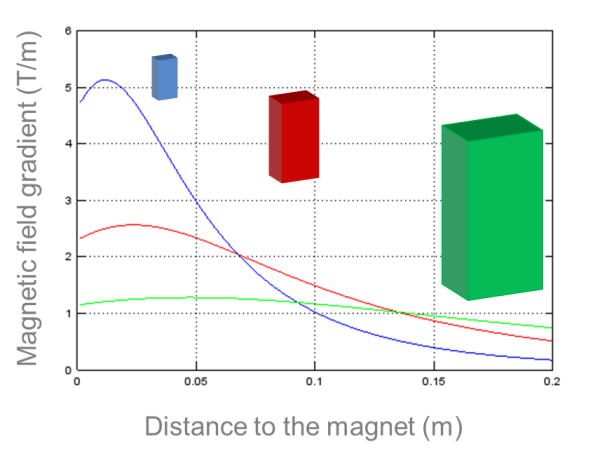
However, the resulting magnetic force is extremely uneven, that is to say its value changes quickly with distance, which means that the force exerted on the beads closer to the magnet is very strong, while the force on the beads farther away from the surfaces of the magnet is very weak.
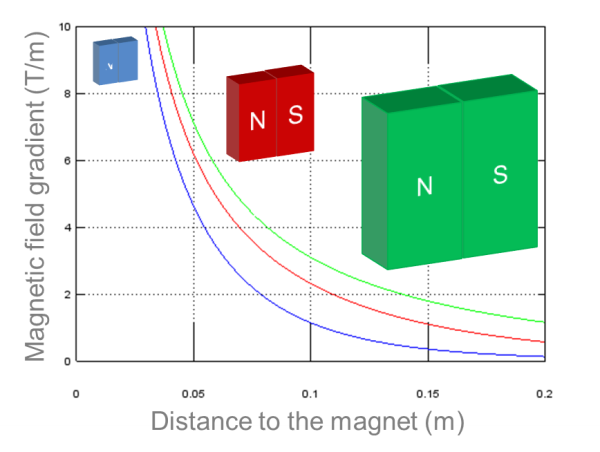
This force profile has two undesired practical drawbacks on magnetic bead separation process:
- Very long separation time (or high sample losses): Because the force on the most distant beads is very weak, it takes a long time to recover all the magnetic beads and their attached biomolecules and in the case of vessels larger than a few milliliters, this can be up to several hours. There is an option to halt the process earlier but this would mean accepting significant losses.
- High risk of irreversible aggregation: Because the nearest beads are subjected to a greater force, they move very quickly. Once they reach the retention area, they experience an even greater force and build up against their neighboring beads, forming clumps. Given that the separation process of the farthest beads (with acceptable losses) involves an extensive separation time, those which quickly reach their final position are exposed to extremely high forces for a very long time.
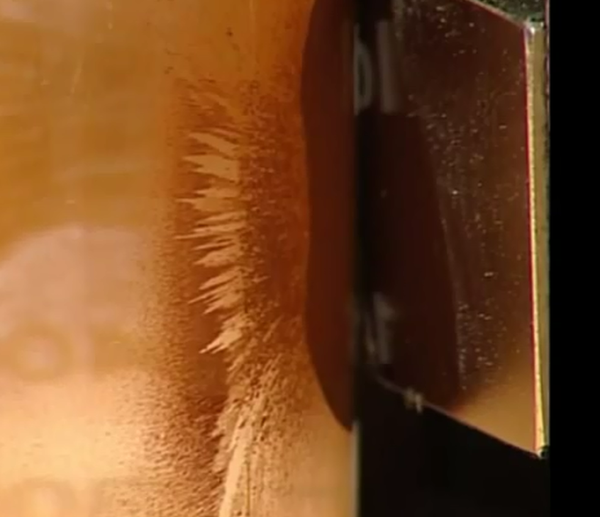
Solving aggregation and distant bead loss
To make the process efficient, the magnetic separation rack must be modified to solve both problems simultaneously. By increasing the force, using, for example larger assemblies of magnet pieces, loss of the farthest beads is reduced but there is far more irreversible bead aggregation near the surface of the magnet. In contrast, reducing the magnetic force in the retention area palliates the irreversible aggregation problem but significantly increases loss of magnetic beads and their attached biomolecules.
To solve both problems simultaneously, more force must be exerted on the farthest beads while reducing the force in the retention area. It is difficult to find a solution with a magnetic force profile that changes with distance, as is the case with classical magnetic separation racks. The ideal solution is to have a magnetic force that does not change with distance. When the force is homogenous (as is the case with Sepmag’s Biomagnetic Separation Systems), it is possible to have a higher magnetic force farther from the retention area and a lower force near the magnet at the same time.
This means that the most distant beads travel faster and the entire magnetic bead separation process is faster without causing additional loss. The beads reach the retention area at a constant pace because all the beads move at the same speed and are subject to a gentle force – just strong enough to retain them when the supernatant is extracted. What's more, no clumps are formed and sonication is avoided, greatly simplifying the scaling up process.
Homogenous magnetic fields
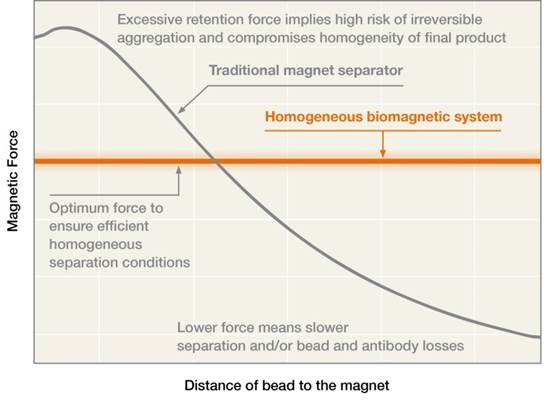
The basic and oft-forgotten concept is that homogenous magnetic fields generate magnetic torque but not magnetic force. When beads are successfully separated with a simple neodymium-iron-boron magnet, this is not because of the strong magnetic field generated but the significant change in the magnetic field and distance. To generate a magnetic force, an inhomogeneous magnetic field is required.
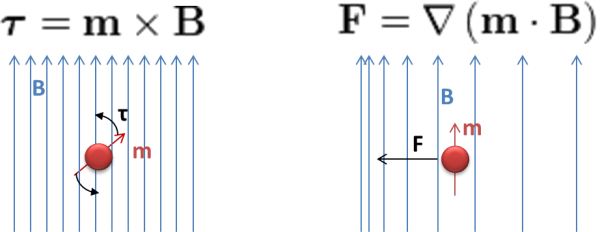
The second important concept is that the strength of the magnetic force exerted over a bead depends on both magnetic moment and on the magnetic field profile. The magnetic moment of the bead depends on the magnetization curve. For superparamagnetic materials, when the magnetic field is very low, the magnetic moment is proportional to the intensity of the applied magnetic field (constant susceptibility). When the field applied is high enough, the magnetic properties become saturated and the bead magnetic moment is constant. The exact ‘saturation field’ value depends on the specific material used for the ‘magnetic pigment’, but for a typical nanosized iron oxide used on commercial beads, the applied magnetic field should be over B>0.1 Tesla (80 kA/m).
Magnetic separation rack vs constant magnetic force separation systems
The difference between a magnetic separation rack (on the right in the video) and a constant magnetic force separation system (on the left in the video) is evident. Using the same number of permanent magnets, the separation time is much shorter even though the system on the left is far gentler on the beads throughout the process to avoid clumps.
The exact value of the force depends not only on magnetic gradient but also on the magnetic moment of the beads and buffer viscosity, therefore there is no universal magnetic field gradient value that can be recommended. Fortunately, the companies that develop and manufacture advanced biomagnetic separation systems have amassed a great deal of experience in the field and can help you to determine the final value.
The choice of the right gradient is important because too low a value makes it impossible to separate small beads or beads in high viscosity suspensions (such as, for example, whole blood). In contrast, too high a magnetic field gradient is counterproductive for large beads in water-based suspensions because the resultant magnetic force would be excessive and generate clumps. With most life science processes, there is no one system suitable for all magnetic bead separation processes.
Using devices with different magnetic forces at each point of the working volume makes it difficult to validate separation processes. Given that the magnetic separation conditions for each bead are different, it is difficult to parameterize the process and identify the key values of an efficient setup. However, working with a homogeneous magnetic force makes it possible to test the process in well-known conditions for the entire suspension, checking different magnetic forces as necessary and determining the right value for the magnetic bead separation process.
SEPMAG® Magnetic Separation Racks
A variety of magnetic separators are available on the market, ranging from very simple concentrators for one tube to complicated fully automated devices. Particles with a diameter larger than 1 micrometer can be separated easily using simple magnetic separators, while separation of smaller particles (magnetic colloids with a particle size from 10 to hundreds of nanometres) may require the use of high-gradient magnetic separators. The racks are designed to hold various amounts of micro-tubes or tubes and based on the sample volume. Test tube magnetic separators allow to separate magnetic particles from volumes between approximately 5 microliter and 50 milliliter.
SEPMAG® offers 2 types of magnetic separation racks:
- Small volumes (Sepmag LAB, Sepmag A): for sample volumes of 1-400 ml
- Large volumes (Sepmag Q, Sepmag N): for batches of several litters
Processes are monitored and recorded using the MONITOR hardware and software and QUALITANCE system, enabling operators to monitor the entire magnetic separation process. The first is and R&D oriented setup that allows to determine the effect of changes in the suspension (type of beads, its concentration, buffer composition, temperature) over the magnetic separation behavior, allowing developing process that can be later directly scaled-up (or down) to other volumes using the same magnetic force.
The QUALITANCE setup is developed for Production Quality Assurance. It compares the separation of the current batch with the reference separation curves, allowing early detection of problems with bead size, distribution, concentration or buffer conditions, so that immediate corrective actions can be taken, rather than having to wait for QC, hours, days or weeks later.
Don't forget to check these posts from our blog in order to get a deeper insight into the scaling-up of biomagnetic separation processes:
- Why do IVD companies scale up their biomagnetic separation processes?
- Why do different batch volumes require different magnetic fields?
- The 2 Questions to answer before scaling up your magnetic separation rack
Check www.sepmag.eu/ebooks to access to FREE eBooks on the subject, or contact us. We will be glad to help you to achieve an efficient magnetic bead separation process!

